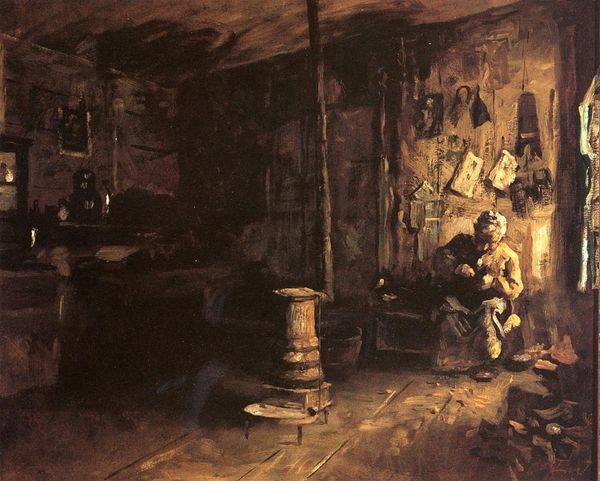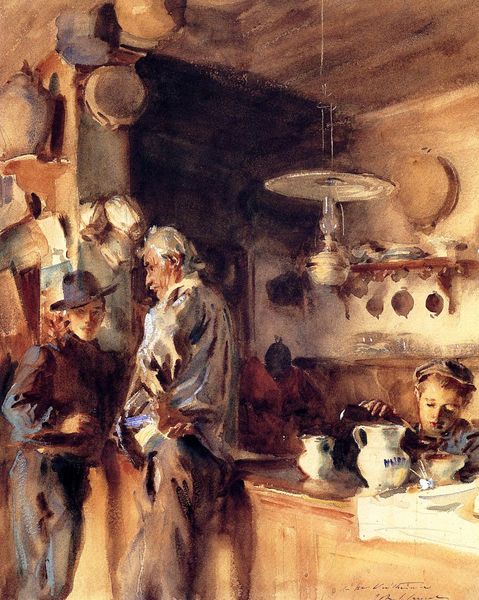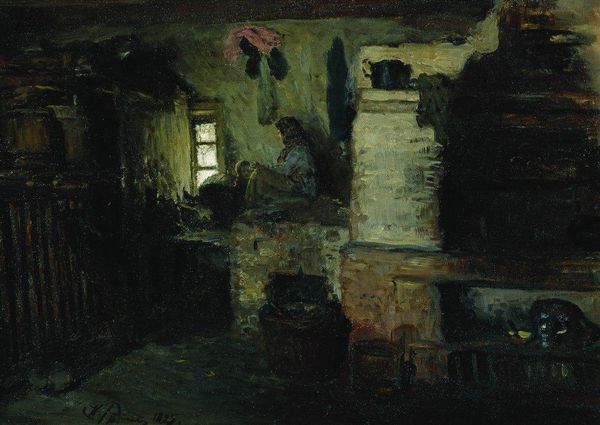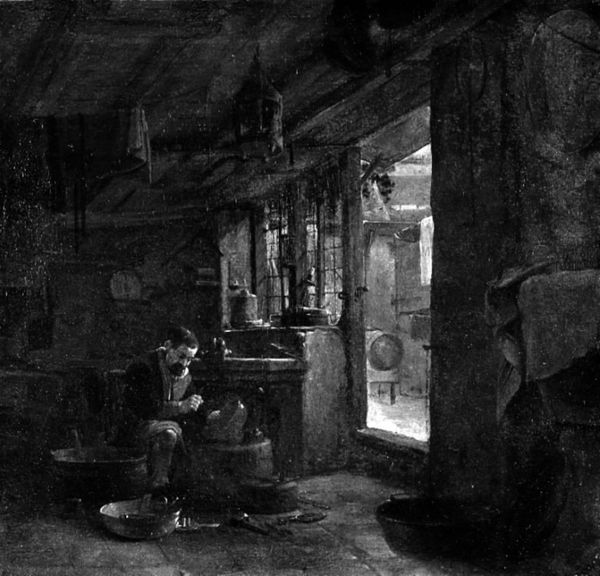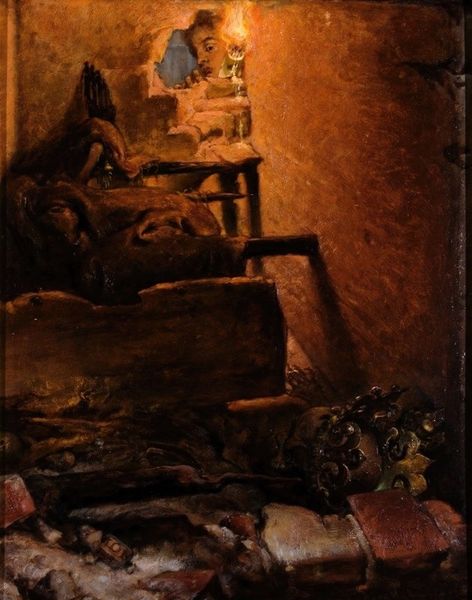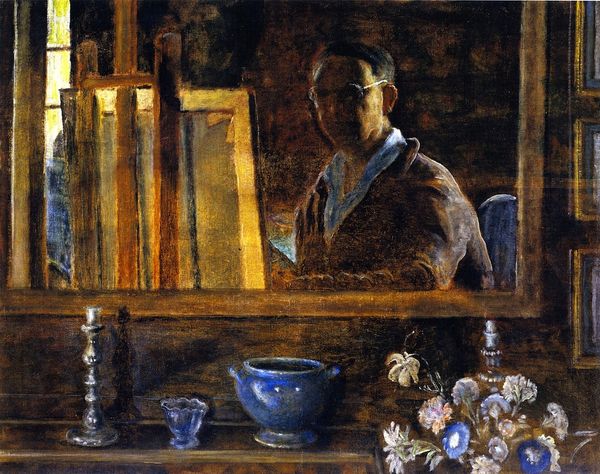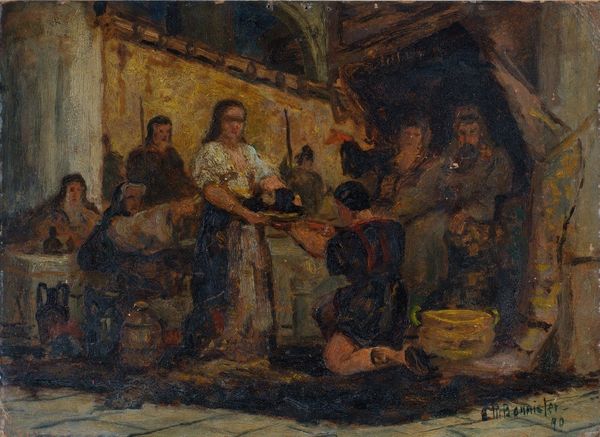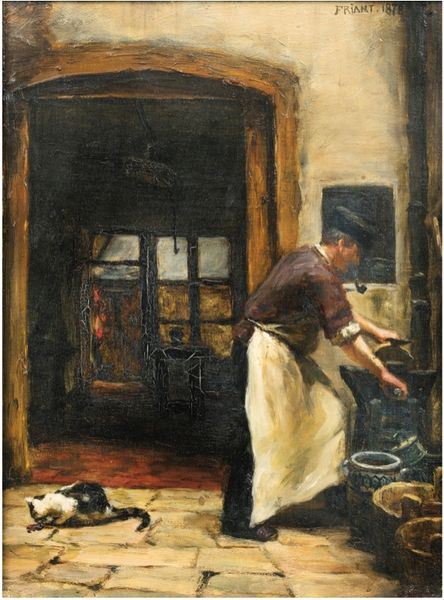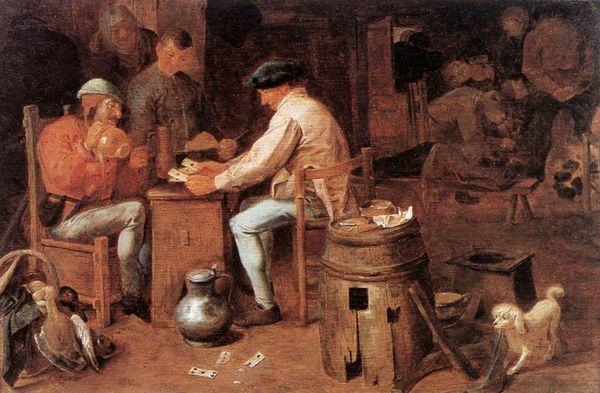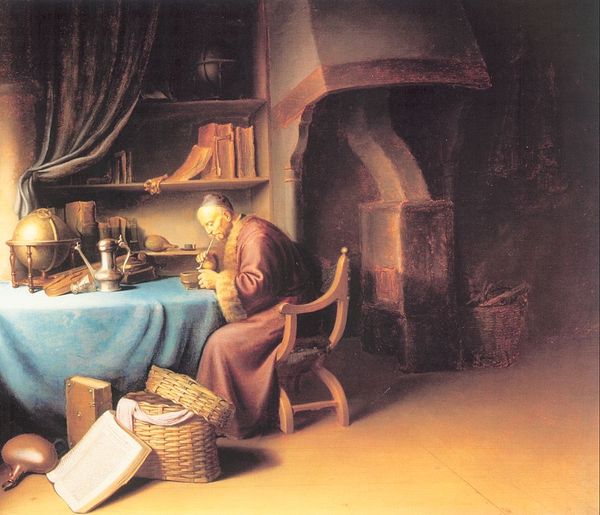
painting, oil-paint
#
painting
#
oil-paint
#
oil painting
#
orientalism
#
genre-painting
#
academic-art
#
realism
Copyright: Public domain
Editor: This oil painting is called "Cairo," created by Konstantin Egorovich Makovsky in 1870. The rendering feels both intimate and foreign. What do you see in this work that reveals its historical or cultural context? Curator: Well, immediately I see the influences of Orientalism, a 19th-century fascination within European Academic art that romanticized the "East." Consider how these depictions, often by artists who never lived in these places, presented a version of "Cairo" designed to appeal to Western audiences. Do you see that tension? Editor: Yes, the way the interior is almost theatrical, and yet, we see daily life. How was it received at the time, and how do institutions contend with its display now? Curator: It would likely have been received as exotic, fulfilling fantasies of an unfamiliar world. Museums now critically contextualize such works, highlighting how they participate in a long history of representing the 'other' and the dynamics of colonial power. It raises questions about who has the authority to represent a culture and the politics of seeing. Editor: That makes so much sense! The painting's aesthetic appeal becomes intertwined with these complex societal considerations. Curator: Precisely. By acknowledging this history, we can understand "Cairo" not just as a depiction, but as an active participant in the construction of a certain Western view of the Middle East. What’s important is to keep prompting conversations about visual representation. Editor: Thank you. This definitely offers a deeper understanding. I hadn't fully appreciated the political nuances embedded within what seems like a simple genre scene.
Comments
No comments
Be the first to comment and join the conversation on the ultimate creative platform.
